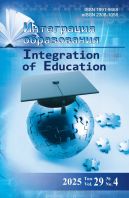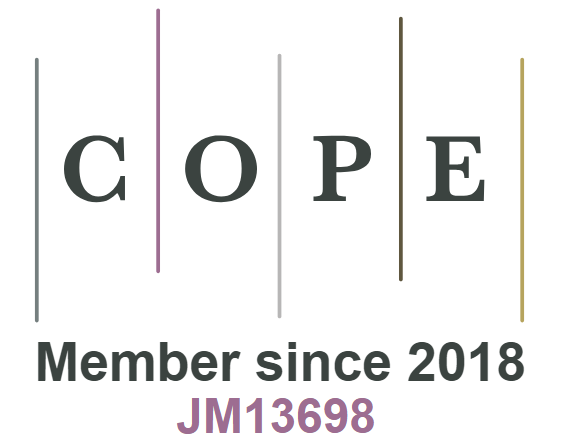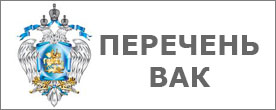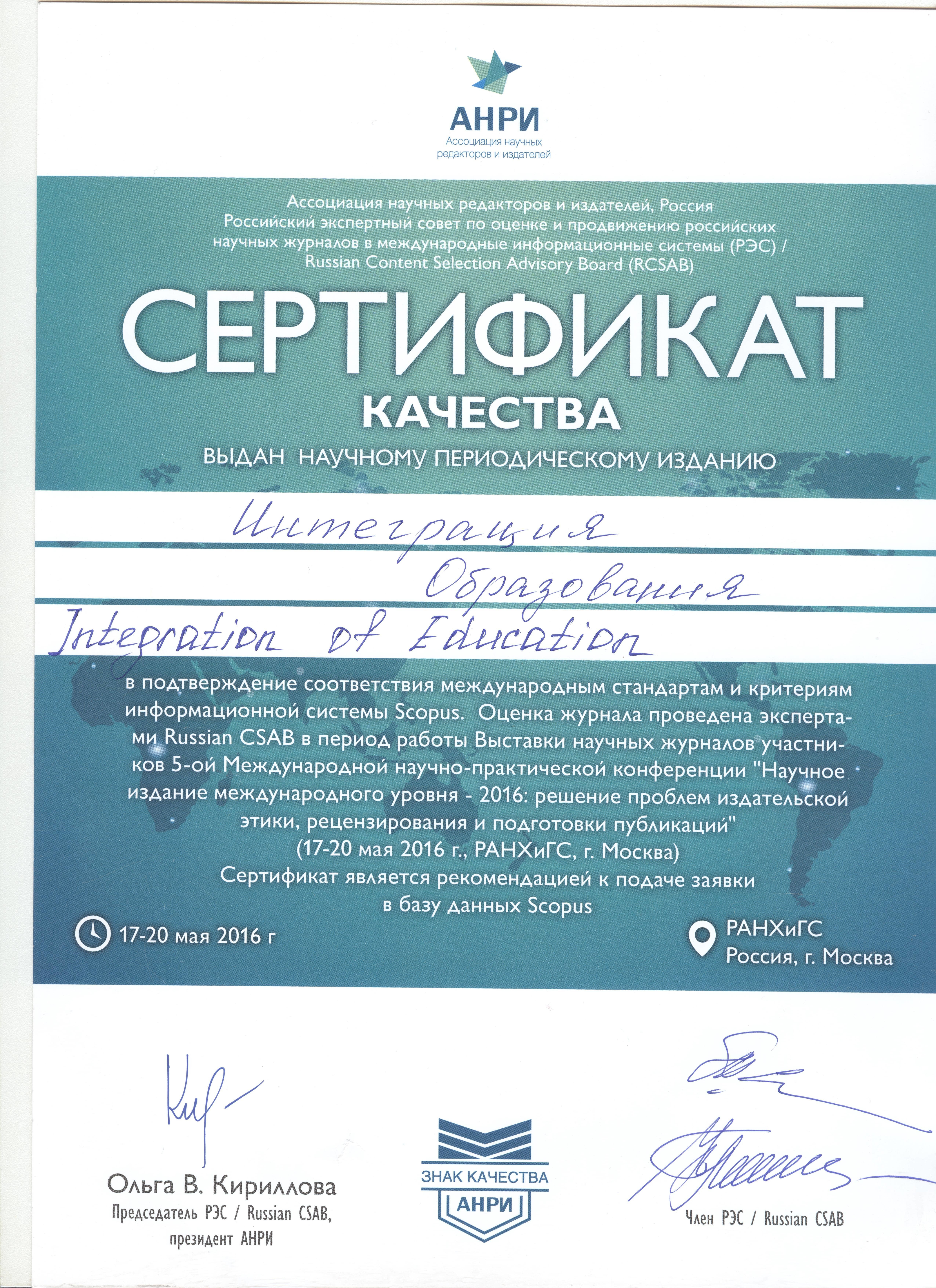UDK 001.89:331.108.2
DOI: 10.15507/1991-9468.092.022.201803.460-479
Evaluation of Availability of Human, Scientific, Technological and Innovative Potential in the Context of Priorities in Scientific and Technological Development of the Russian Federation
Magomed Sh. Mintsaev
Interim Director of the Department of Science and Technologies of the Ministry of Education and Science of the Russian Federation (11 (ГСП-3) Tverskaya St., Moscow 125993, Russia), Dr.Sci. (Technical Sciences), Professor, ORCID: https://orcid.org/0000-0002-8388-4862, Scopus ID: 56958599000, Researcher ID: O-1875-2016, This email address is being protected from spambots. You need JavaScript enabled to view it.
Irina E. Ilina
Acting Director of the Russian Research Institute of Economics, Politics and Law in Science and Technology (RIEPL) (50a-6 Zemlyanoi Val St., Moscow 105064, Russia), Dr.Sci. (Economics), Associate Professor, ORCID: https://orcid.org/0000-0001-6609-3340, Scopus ID: 56613287600, Researcher ID: J-9790-2014, This email address is being protected from spambots. You need JavaScript enabled to view it.
Svetlana L. Parfenova
First Deputy Director of the Russian Research Institute of Economics, Politics and Law in Science and Technology (RIEPL) (50a-6 Zemlyanoi Val St., Moscow 105064, Russia), Ph.D. (Economics), ORCID: https://orcid.org/0000-0002-9721-8772, Researcher ID: K-1116-2014, This email address is being protected from spambots. You need JavaScript enabled to view it.
Vladislava N. Dolgova
Head of the Division for Social and Economic Problems of the Development of the Scientific and Technological Sphere, Russian Research Institute of Economics, Politics and Law in Science and Technology (RIEPL) (50a-6 Zemlyanoi Val St., Moscow 105064, Russia), Ph.D. (Economics), ORCID: https://orcid.org/0000-0002-3077-2517, Researcher ID: N-1723-2018, This email address is being protected from spambots. You need JavaScript enabled to view it.
Elena N. Zharova
Head of the sector for monitoring the demand for tools to support scientific, technical and innovation activities of the Russian Research Institute of Economics, Politics and Law in Science and Technology (RIEPL) (50a-6 Zemlyanoi Val St., Moscow 105064, Russia), Ph.D. (Economics), ORCID: https://orcid.org/0000-0002-8281-8812, Scopus ID: 57194616748, Researcher ID: N-1808-2018, This email address is being protected from spambots. You need JavaScript enabled to view it.
Elizaveta V. Agamirova
Head of the sector of analysis and forecast of scientific and technological complex development and its priority directions implementation of the Russian Research Institute of Economics, Politics and Law in Science and Technology (RIEPL) (50a-6 Zemlyanoi Val St., Moscow 105064, Russia), Ph.D. (Economics), ORCID: https://orcid.org/0000-0002-3972-4749, Scopus ID: 57073854200, Researcher ID: N-1823-2018, аThis email address is being protected from spambots. You need JavaScript enabled to view it.
Introduction. The implementation of priorities of the scientific and technological development of the Russian Federation involves an assessment of the trends in the development of human, scientific, technological and innovation potential within the framework of these directions. In modern conditions of transformation of science and technology into key factors of Russian development, it is necessary to provide the country’s economy with human resources capable of withstanding “big challenges”, but at this stage there is a shortage of highly qualified specialists in many key industries that can offer a new scientific result, taking into account the prospects for its application. The purpose of the article is to develop an approach to assess the human, scientific, technological and innovative potentials in the context of priorities in the scientific and technological development of the Russian Federation and its validation using the example of three priorities.
Materials and Methods. The materials of this study draw on Rosstat and FSMNO ; Rospatent; Web of Science and Scopus. The object of research is to assess human, scientific, technological and innovative potential in the context of priorities in scientific and technological development of the Russian Federation. In the course of the research, a multiplicative model of the impact of the availability of human, scientific, technological and innovative capacity on labour intensity was developed. In the process of research, the following research and analysis methods were used: comparison, induction and deduction method, generalisation method, chain substitution method, logical structure study, system analysis, and special methods of statistical, comparative analysis. In the methodological plan, we used the system and process appro aches in the basis of the study.
Results. The study revealed that the labour intensity in 2016 for all three priorities of the scientific and technological revolution of the Russian Federation has increased. Therefore, according to the priorities of the scientific and technological revolution of the Russian Federation, the availability of scientific, technological and innovative potential is not sufficient, which leads to a decrease in the reverse indicator of labour intensity - labour productivity in the markets within the framework of these priorities. Concerning the impact on labour intensity in all three priorities, one observes: the growth of “collaborations” in fundamental research, the applied effectiveness of scientific activity, “collaborations” of applied research; reduction in citations from scientific articles, low patent activity of engineering and technical workers, technological demand for patents. Therefore, against the background of emerging collaborative activity of actors in the process of research and development and the growth of the applied effectiveness of scientific activity, there is a low level of orientation of scientific and scientific-technical results to c ommercialisation.
Discussion and Conclusions. On the basis of the multiplicative model developed by the authors for assessing the impact of the provision of human, scientific, technological and innovative capacities on labor intensity, it was tested on the example of the three priorities of the scientific and technological development of the Russian Federation (a, b, c). It was revealed that the labour intensity in 2016, according to the priorities of the Scientific and Technical Council of the Russian Federation, increased, and the availability of scientific, technological and innovative potential is not sufficient, which leads to a decrease in the inverse measure of labour intensity - labour productivity in high-tech markets within the framework of these priorities. Concerning the impact on labour intensity for all three priorities, it was revealed: the growth of “collaborations” of fundamental research, the applied effectiveness of scientific activity, “collaborations” of applied research; reduction in citations from scientific articles, low patent activity of engineering and technical workers, technological demand for patents. It was also revealed that against the background of the emerging collaborative activity of actors in the process of research and development and the growth of the applied effectiveness of scientific activity, there is a low level of orientation of scientific and scientific-technical results to commercialisation.
Keywords: priorities of scientific and technological development, personnel potential, publication activity, patent activity, technology, innovation potential, labor intensity
Acknowledgements: The study was carried out within the framework of the state order of the Ministry of Education and Science of the Russian Federation “Monitoring and analysis of the publication and patent activity of Russian and world science to ensure the implementation of state scientific and technical policy” (project no. 28.12616.2018/12.1).
For citation: Mintsaev M.Sh., Ilina I.E., Parfenova S.L., Dolgova V.N., Zharova E.N., Agamirova E.V., Evaluation of availability of human, Scientific, Technological and Innovative Potential in the Context of Priorities in Scientific and Technological Development of the Russian Federation. Integratsiya obrazovaniya = Integration of Education. 2018; 22(3):460-479. DOI : 10.15507/1991-9468.092.022.201803.460-479
Contribution of the authors: Magomed Sh. Mintsaev – concept development; definition of an ide a. Irina E. Ilina – scientific management; concept development; provision of resources; writing text. Svetlana L. Parfenova – definition of methodology of article; critical analysis of materials; provision of resources. Vladislava N. Dolgova – collection and processing of information; formalized data analysis; data management. Elena N. Zharova – collection and processing of information; formalized data analysis; writing and finalising the text. Elizaveta V. Agamirova – collection and processing of information; formalized data analysis; writing and finalising the text.
All authors have read and approved the final manuscript.
Submitted 06.03.2018; revised 25.05.2018; published online 28.09.2018.

This work is licensed under a Creative Commons Attribution 4.0 License.





























